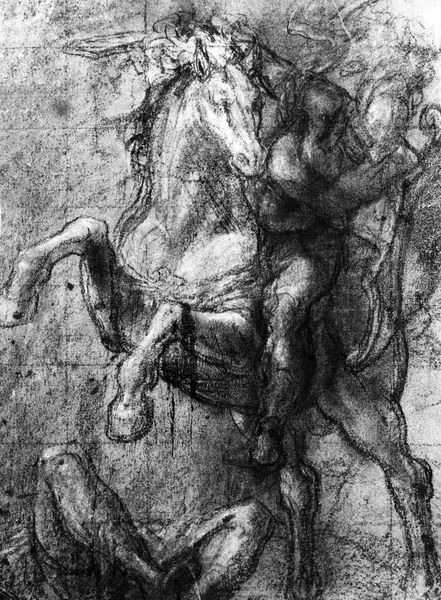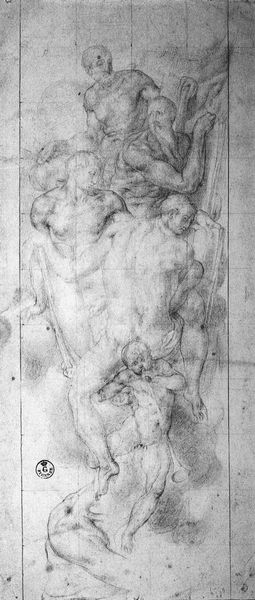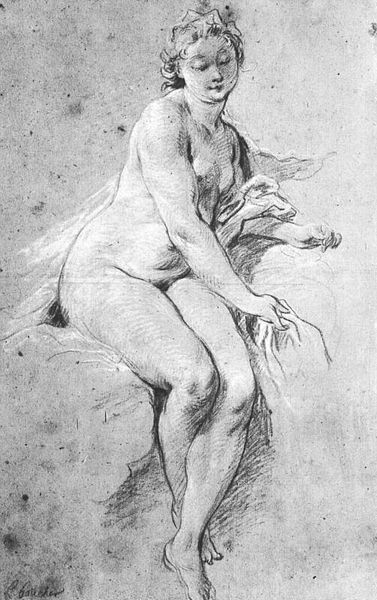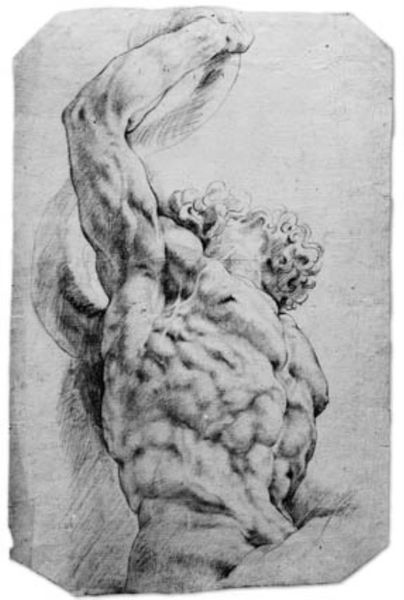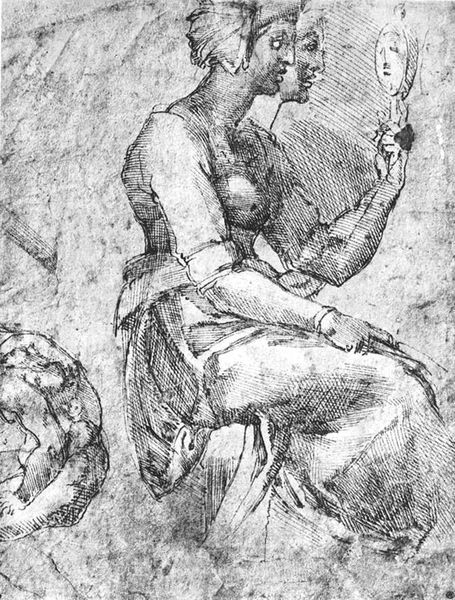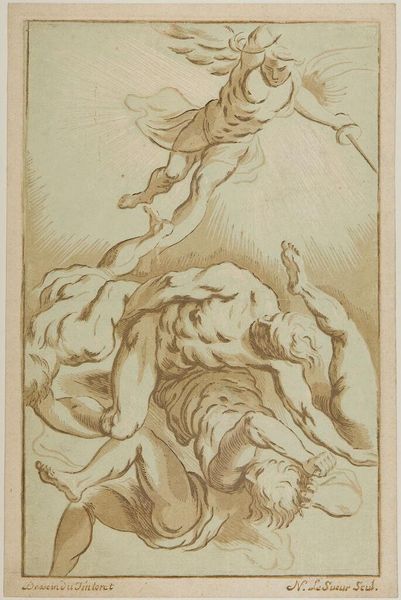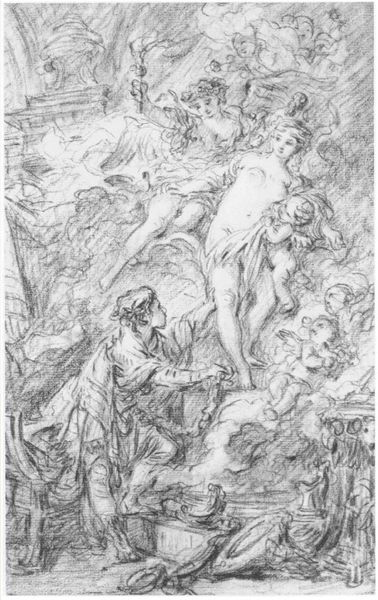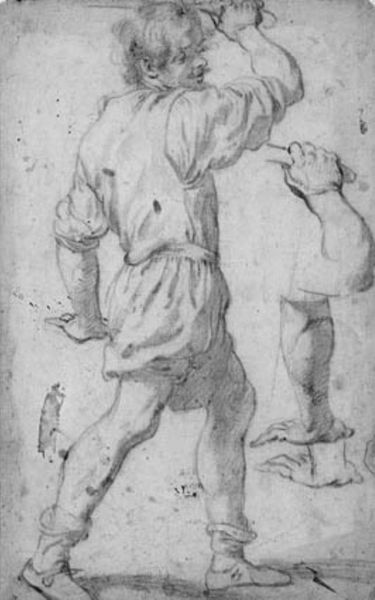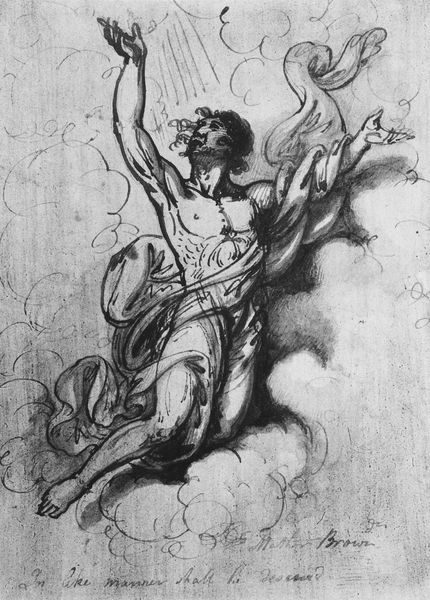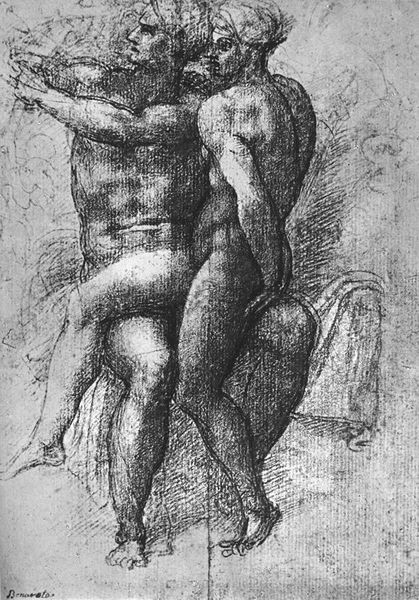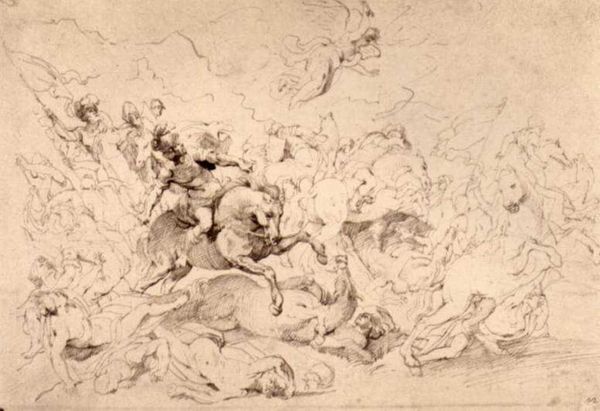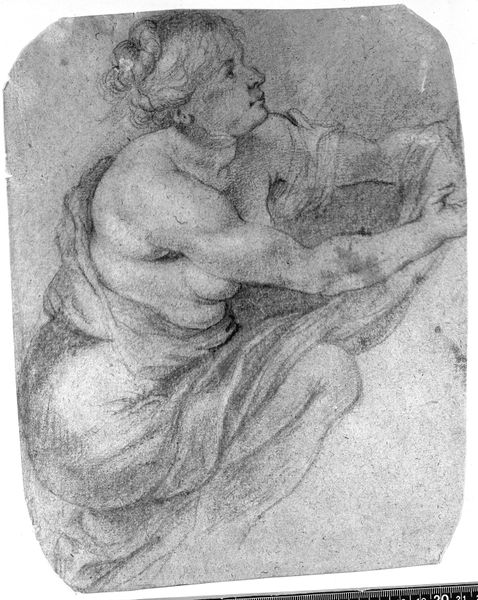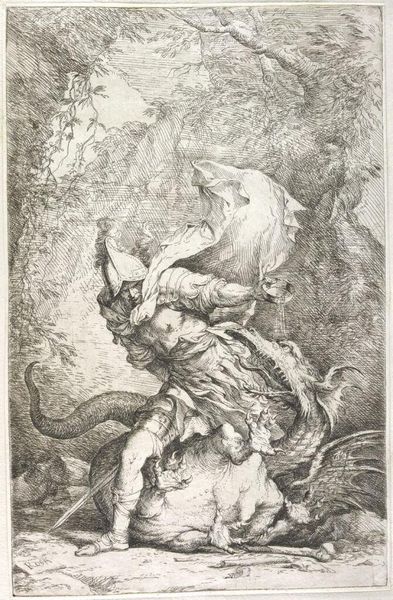
drawing, charcoal
#
portrait
#
drawing
#
animal
#
charcoal drawing
#
figuration
#
form
#
11_renaissance
#
sketch
#
horse
#
line
#
charcoal
#
history-painting
#
italian-renaissance
Dimensions: 274 x 262 cm
Copyright: Public domain
Editor: So, this is "Horse and Rider" by Titian, done around 1537, in black chalk on blue paper. It's a powerful sketch. There's so much raw energy, but the figures seem caught in a moment of turmoil. How do you interpret this work in its historical context? Curator: I see this less as a glorification of equestrian power, typical for its time, and more as a challenge to those ideals. Look at the horse’s strained posture, the rider’s awkward grip. Titian, in using the grid for proportion, also subtly reveals the constructed nature of power, especially male dominance so central to Renaissance society. It’s like he’s pulling back the curtain. What does the medium of charcoal on blue paper evoke for you? Editor: I hadn’t thought of it that way! The charcoal feels immediate, like a snapshot. And the blue paper... maybe it symbolizes something beyond the mundane, a space for idealized notions of heroism? Curator: Exactly! Blue was often associated with the divine. Now, consider the historical context: Titian was a master of the Venetian School. Venice, as a mercantile republic, possessed a different social and political framework from other Italian city-states. Does that awareness shift your perception of what Titian might be critiquing? Editor: That's fascinating! Perhaps he’s questioning the rigid hierarchies of other societies from the relatively more fluid social structure of Venice. Curator: Precisely. His art was deeply embedded in the politics of its time. Can we see the drawing itself as an act of resistance, a way to deconstruct prevailing power dynamics? Editor: It makes me realize how vital it is to look at these pieces through multiple lenses—artistic, political, and social—to really get at what the artist might have been trying to say. Curator: Indeed. Art like this isn’t just beautiful; it's a historical and cultural document. And your insight on the horse as being other than strong is critical. It challenges the patriarchal idea of control over nature. It invites a continued, questioning gaze.
Comments
No comments
Be the first to comment and join the conversation on the ultimate creative platform.
